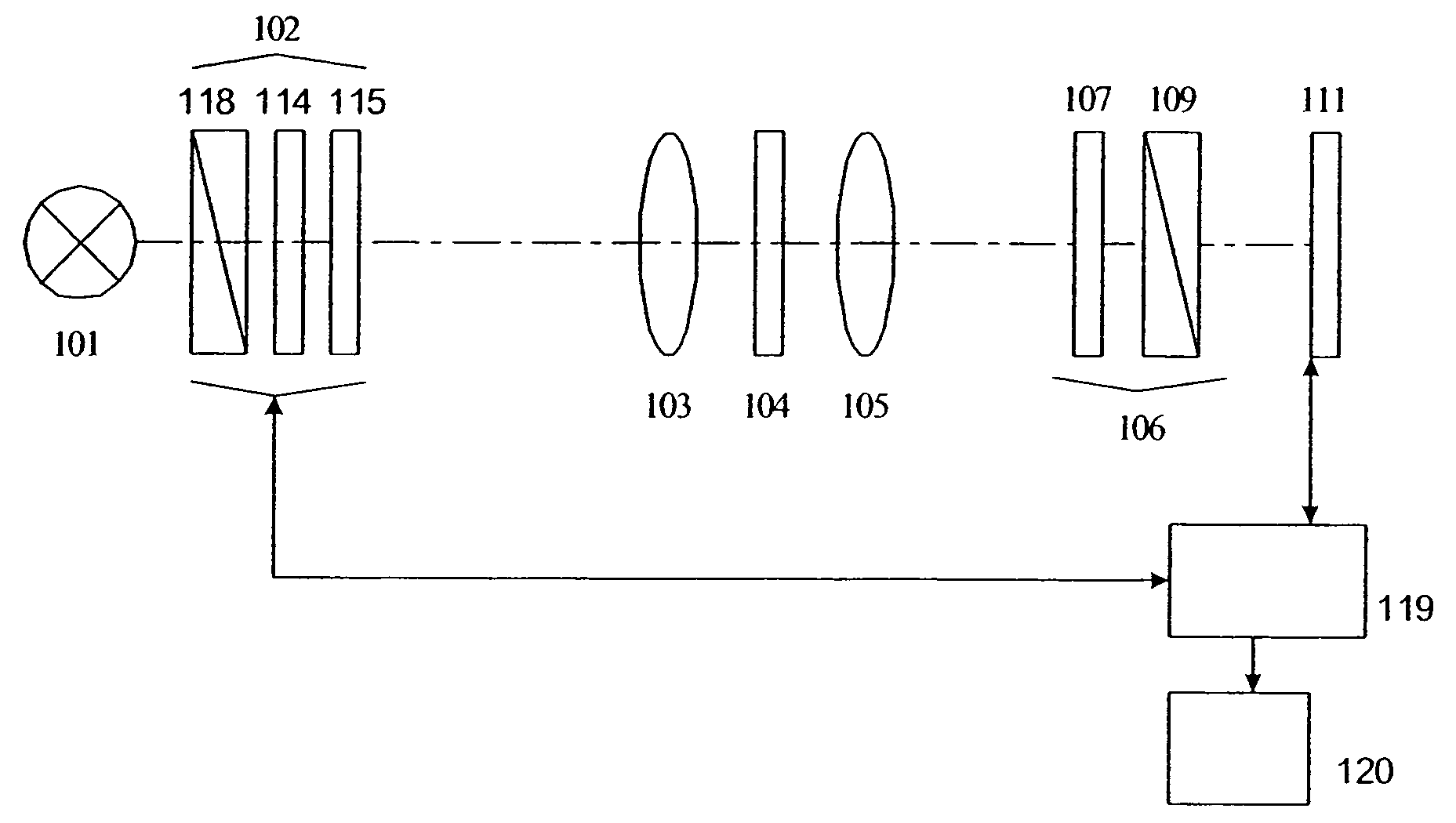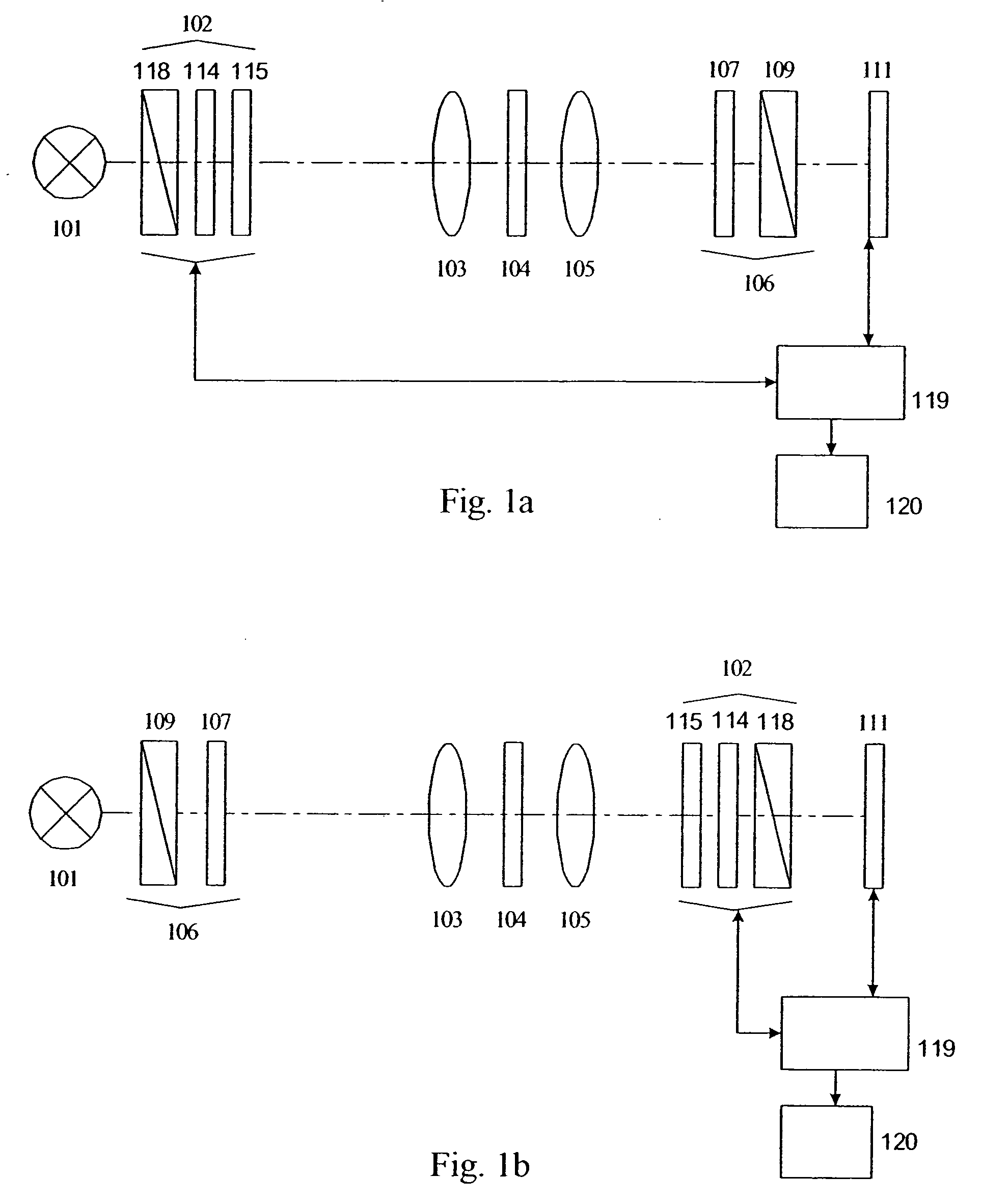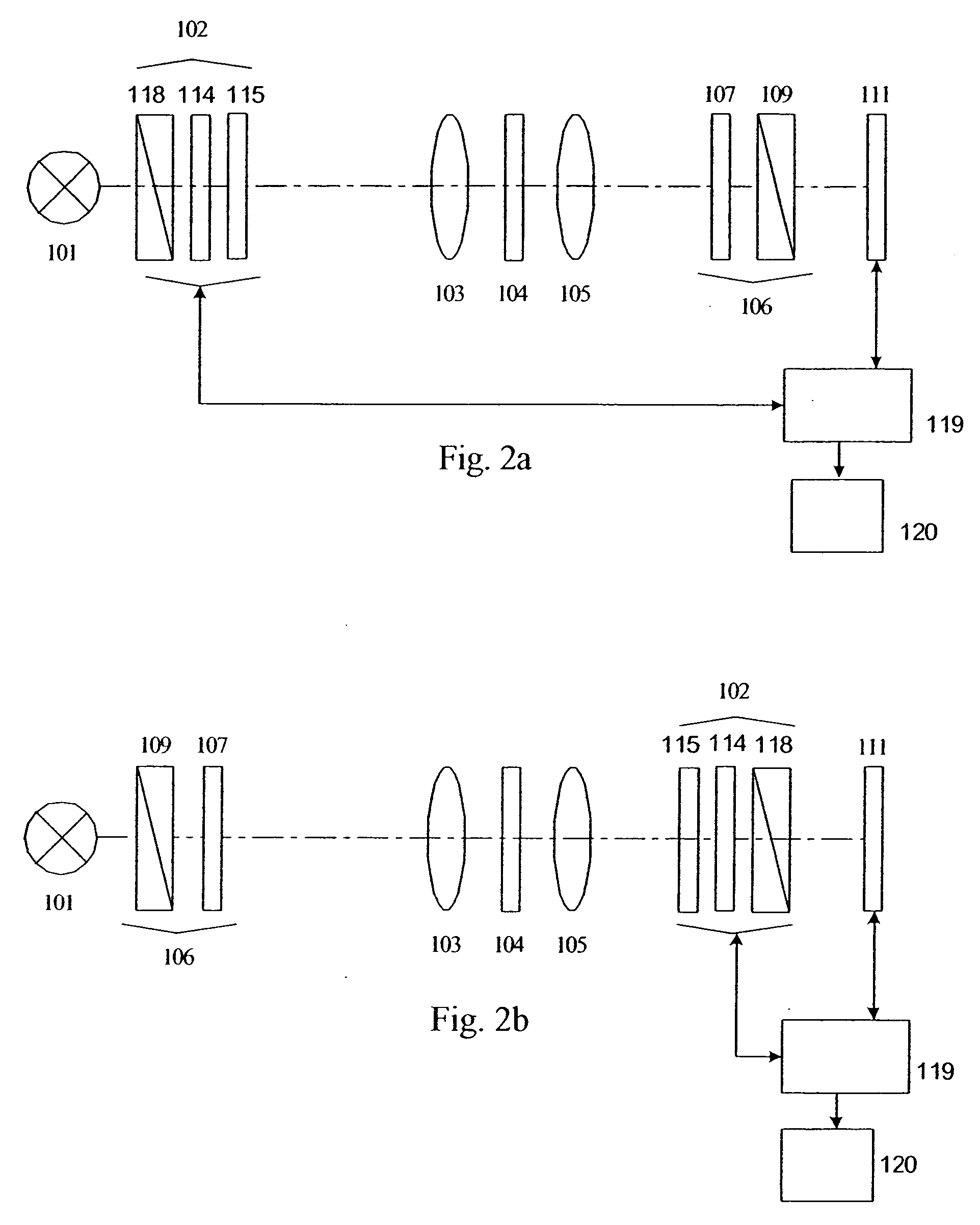Retardance measurement system and method
a retardance and measurement system technology, applied in the field of polarized light, can solve the problems of not being well-suited to measuring low retardance specimens, and not providing high sensitivity with low retardance specimens. achieve the effect of high acquisition speed and high accuracy
- Summary
- Abstract
- Description
- Claims
- Application Information
AI Technical Summary
Benefits of technology
Problems solved by technology
Method used
Image
Examples
second embodiment
[0060] In a second embodiment, N=3 and the states used are χ1, χ2, and χ3. From the images, one derives the quantities:
A≡[(I1−I3) / (I1+I2)]*tan(c / 2) [5a]
B≡[(I2−I3) / (I1+I2)]*tan(c / 2) [5b]
from which the retardance δ and azimuth angle φ are calculated as:
δ=2 arctan{[21 / 2Z] / [1+(1−2[Z / tan(c / 2)]2)1 / 2]} [6a]
φ=½ arctan (A / B)−22.5° [6b]
where
Z=(A2+B2)1 / 2 [6c]
[0061] This embodiment provides better signal-to-noise than the N=2 embodiment, and works well in situations where the optical equipment has a high extinction ratio, such as 200:1 or better.
Embodiment with N=5
third embodiment
[0062] In a third embodiment, N=5. All states are used, χ0-χ4, to obtain images I0-I4. From these, one determines the quantities A and B as
A≡[(I1−I2) / (I1+I2−2I0)]*tan(c / 2) [7a]
B=[(I4−I3) / (I4+I3−2I0)]*tan(c / 2) [7b]
from which the retardance δ and azimuth φ are calculated as
δ=arctan(Z) when I1+I2−2I0≧0 [8a]
δ=180°−arctan(Z) when I1+I2−2I0<0 [8b]
φ=½ arctan (A / B) [8c]
[0063] This embodiment has the highest sensitivity of all the embodiments, and has equal sensitivity for all retardance azimuth values.
Embodiment with N=4
fourth embodiment
[0064] In a fourth embodiment, N=4. The extinction state χ0 is not used. Instead, the four states used are χ1, χ2, χ3, and χ4, resulting in images I1-I4. From these, the parameters A and B are calculated as:
A=[(I1−I2) / (I1+I2)] tan(c / 2) [9a]
B=[(I4−I3) / (I4+I3)] tan(c / 2) [9b]
from which the retardance δ and azimuth angle φ are calculated as:
δ=2 arctan(Z / [1+(1−[Z / tan(c / 2)]2)1 / 2]) [10a]
φ=½ arctan (A / B) [10b]
[0065] This system offers good sensitivity and, like the previous embodiment, the retardance sensitivity is independent of azimuth angle. However, it requires that the optical apparatus have a high extinction, such as 200:1, for best performance.
[0066] For any of the above embodiments that omit one or more of the states χ1-χ4, there are equivalent alternatives that can be used equally well. For example, instead of using χ1 and χ3, one might use χ3 and χ2, or χ2 and χ4, and so on. These variations consist of the embodiments described above, except that the elliptical polarizers e...
PUM
| Property | Measurement | Unit |
|---|---|---|
| azimuth angle | aaaaa | aaaaa |
| azimuth angle | aaaaa | aaaaa |
| angle | aaaaa | aaaaa |
Abstract
Description
Claims
Application Information
 Login to View More
Login to View More - R&D
- Intellectual Property
- Life Sciences
- Materials
- Tech Scout
- Unparalleled Data Quality
- Higher Quality Content
- 60% Fewer Hallucinations
Browse by: Latest US Patents, China's latest patents, Technical Efficacy Thesaurus, Application Domain, Technology Topic, Popular Technical Reports.
© 2025 PatSnap. All rights reserved.Legal|Privacy policy|Modern Slavery Act Transparency Statement|Sitemap|About US| Contact US: help@patsnap.com



